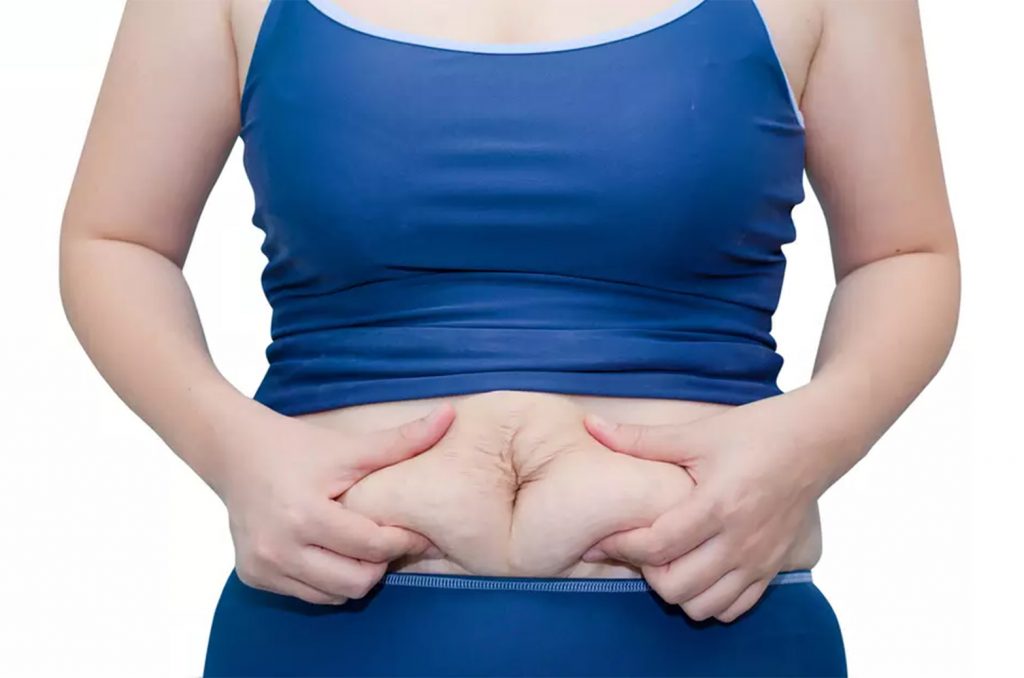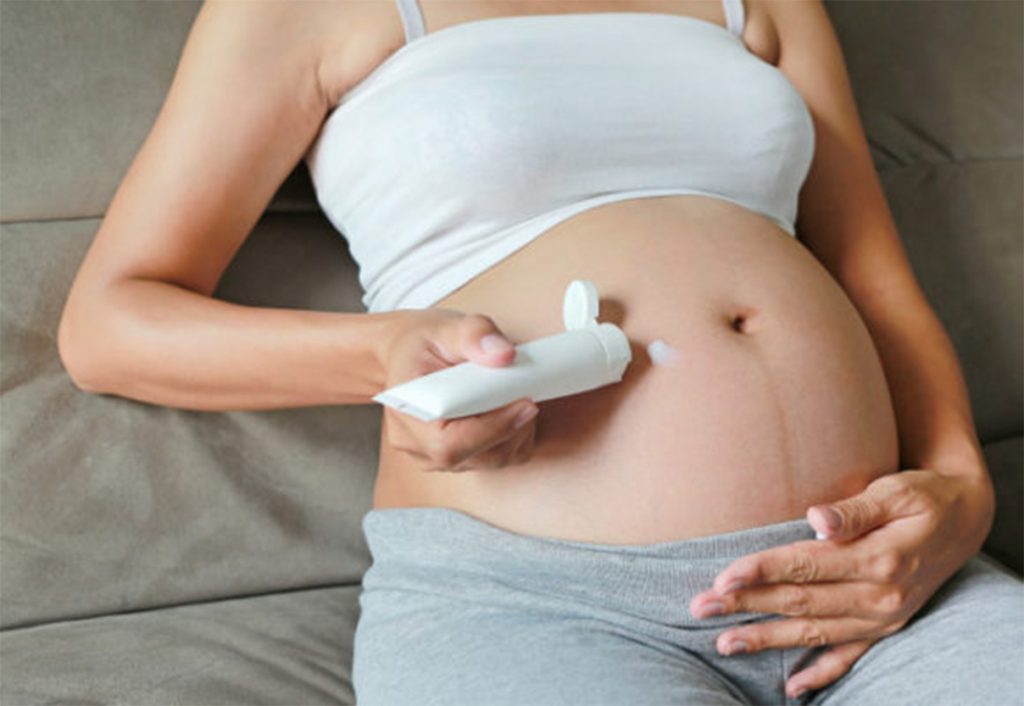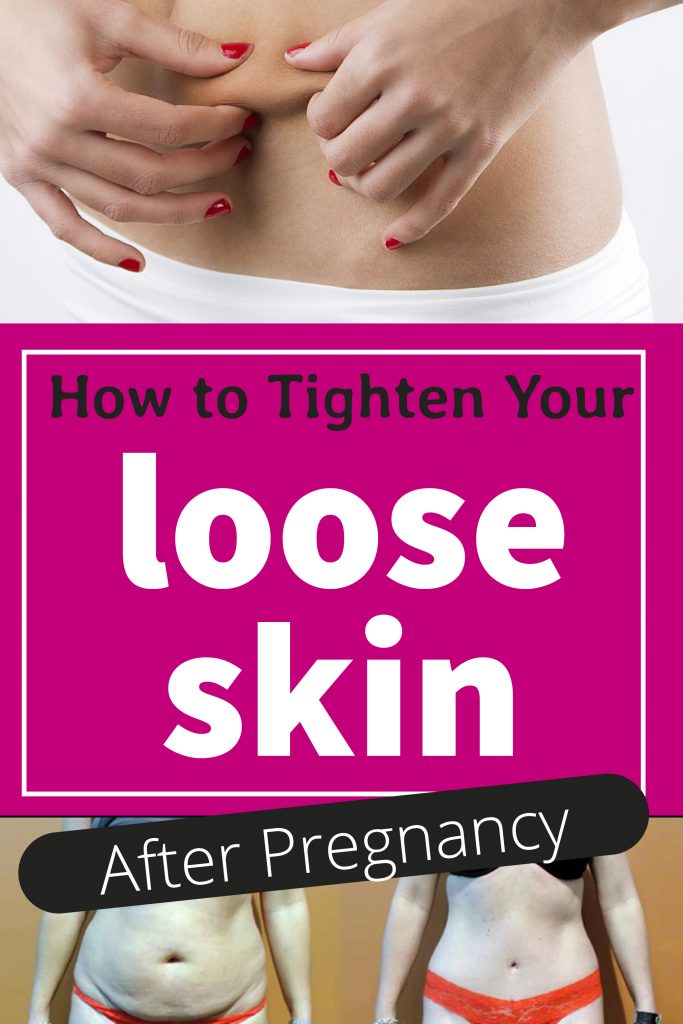
When a woman gives birth, a great transformation takes over her life. A transformation that has been prepared for 9 months, but which takes place in this very special moment. And in this moment when you worry about this new life that has just arrived in the world, it is quite common for some mothers to forget or try not to think about their own body recovery.
To have a flabby belly in the postpartum period is something quite common, but it bothers most women, even though they know that there are several other worries at that same moment.
But you can take care of yourself, your body, and your health while you take care of your baby in the best possible way. And that is the subject we will address in today’s text. After all, how do we deal with the changes in pregnancy in our postpartum bodies?
Why Does the Belly Skin Gets Saggy?
First of all, we must say that it is inevitable that the belly skin becomes saggy in the postpartum period, since flaccidity is nothing more than excess skin caused by the enormous growth of the woman’s belly in a short period of time, and then by the reduction of this belly. This “up and down effect” ends up making the belly of a woman who has just had a baby flaccid, but the good news is that this is not something that needs to bother you and can be reversed in a healthy way. The two main procedures to fight the sagging belly in postpartum are diet and exercise, in other words, having a healthy lifestyle is essential for the results to appear.
It is necessary to think about some details, mainly so that this diet does not interfere in a woman’s life when it comes to breastfeeding, so paying attention to your eating routine is essential so that it does not end up generating negative effects.
If this routine is followed in the right way, the woman has only to gain, because besides the decrease in the saggy belly and the inevitable improvement in its health, the baby will also be fed in the best way and by a very willing mother.
Care begins during pregnancy (or even before)
The prevention of saggy belly still begins in pregnancy: the future mother must invest in a balanced diet, drink plenty of water and pay attention to excess weight. The increase in body volume causes the rupture of the elastic fibers of the skin, potentiating flaccidity.
Doing low and medium impact physical activities during pregnancy also helps the woman to maintain health in pregnancy and adapt better to changes in the body.
In the last months of pregnancy, care to avoid saggy belly should be intensified. Both in the body and in the breasts. This includes the use of topical products, compatible with pregnancy and breastfeeding, that offer safety for both mother and baby. Items that have formulations capable of toning the skin and attenuating skin relaxation.
Use of Cosmetic Products

Cosmetics to combat flaccidity are effective when combined with a healthy lifestyle. When choosing the product, new mothers should pay attention to formulas and ingredients that reaffirm the skin. Much more than reshaping the silhouette, cosmetics that fight sagging and restore body firmness should have high hypoallergenic tolerance, in addition to being free of questionable ingredients. Also, they must have items that combine active ingredients with proven efficacy, both for a tensor effect and for results of firmer and more toned skin.
To apply on the body, the recommendation is to use morning and night, in areas such as belly, buttocks, hips and thighs. When using these products, either in cream, serum or gel texture, the tip is to make circular movements in a delicate way, activating blood circulation and facilitating the absorption of nutrients that leave the skin firmer.
In the case of breasts, the use should be careful, respecting the sensitivity of the area. The application can be done on the entire breast. Before using a cosmetic against flaccidity or any other firming lotion it is necessary to be attentive to the hygiene of the breasts, always leaving the nipples clean and dry before using a product.
Take care of your diet
Just because you’re eating for two, doesn’t mean you can eat all you want, indiscriminately. Avoiding post-pregnancy flab means having a healthy diet as a whole (after all, flab is not healthy at all, right?). Consult a dietician to find out the best diet to help in this process and how dieting can be an ally in your life in general – no following restrictive diets or diets that are in vogue during a period as important as postpartum, when the baby depends on its mother’s breast milk to feed. Here, as in other cases, feeding care can begin long before the birth, at the beginning of pregnancy (if not before!), to make sure you are also eating what is essential for your baby to grow well and strong.
You’ve noticed that this care is no secret, right? And they’re good for any stage of life, not just post-pregnancy. The main thing, however, is that you don’t push yourself so hard to “get fit” right after a pregnancy. Each body reacts to this period in a way, and sometimes even with all the care you can notice a little flaccidity (saggy belly skin) after having your baby. The main thing is to try to stay healthy and focus on the moment you are: learning about being a mother and how to take care of a child together with your partner. Breastfeeding is a natural process that helps you lose weight during pregnancy (it is said that you gain up to 14 kilos at this stage) and as time goes by, your body will readapt and return to “normal”. You just have to be patient and take care of your body with care. After all, it was (and still is) your most important tool in this whole process.
Feeding to recover the belly
As far as feeding is concerned, the best for those who want to eliminate the saggy belly in the postpartum period are foods that contain lean proteins, in addition to those that complement fat-free. We can quote some foods as follows:
– Eggs
– Peruvian Chest
– Chicken Breast
– Grains like Lentil and Black Beans
– Natural Skimmed Yogurt
– Fish
– Spinach
– Eggplant
It is important to stress that there must be a balanced diet and the woman must eat every 3 hours both for her health and so that breast milk production does not change. Remember: With a good diet, your baby will also win.
Get physical exercise
Before, during or after pregnancy, physical exercises are very important to keep your body healthy and working properly. Besides relieving stress, it works to burn the extra calories gained in pregnancy and also to keep the body active while you are pregnant. The ideal thing is to consult a doctor to know exactly what is good for you (walking and yoga are great options!) and how long you need to stay away from the gyms after the birth, so that your recovery happens without problems and the exercises do not affect the lactation.
Exercises to Recover the Belly from Postpartum
A good exercise routine is also essential for those who wish to lose the saggy belly in postpartum. There are several different types of exercises that can be done to achieve the goals, although there are some that are more recommended. We can mention some of them, like:
– Abdominal Exercises
– walking
– Skipping rope
Each of these exercises has a different benefit and requires a different kind of effort as well, so let’s talk about each of them in detail so that you can understand them more clearly.
Abdominal Exercises
They are easy to do and can be practiced almost anywhere. Precisely because of this ease, it is very common for abs to be one of the most common exercises to practice at home. It’s also great for the mother, who can exercise close to her baby and pay attention to him all the time.
Walking and Running
A type of exercise that requires you to improve over time, but which brings very beneficial results and goes beyond the belly reduction. Running is good for the cardiovascular system, for breathing and is a great way to keep the body always moving.
Skipping rope
A kind of exercise that can be quite fun and can also be done at home. Although it is heavier than abs and walking, skipping rope also generates even more effects, especially when we talk about burning calories. A great option for the woman who is looking to lose her saggy belly in postpartum.
Moving at Home
Finally, we have to talk about women who do not have the time to exercise all the time, for various reasons. The best tip to be given to these women is not to stop moving even if they are at home. Some of the exercises mentioned here already help, but the daily activities can also help a woman to move more, even if sometimes they are not enough.
Sagging breasts after breastfeeding
In addition to the saggy belly skin in postpartum, another common complaint of mothers about the body are the sagging breasts after breastfeeding. In this case, the woman’s routine will already be a little different, the baby will be a little older and the way of looking after him will change a lot. However, the tips remain the same. A good diet and exercises are the right way to solve this problem too. The fact that the routine changes means that you have to manage your time in other ways to do the exercises, but it also means that you can intensify them.
As you can see, it is possible to have all these cares for your body and be a great mother at the same time. In fact, doing exercises can even help you to be more willing to face the difficulties of being a mother to a newborn baby.
The most important thing about all this is that you are aware that your body and your health are of great importance and that you shouldn’t put that aside no matter what people say. Many women get a sagging belly in the postpartum period, but this is a problem that can be solved with dedication and in a way that doesn’t hurt you physically or in your everyday life.
Find out more…
– It is important to emphasize that it is not only an exercise that will reverse the saggy belly, but a change of posture and attitude with your body.
– When a woman gives birth, many things change in your life and in your body, and it is during this period that you cannot fail to take care of your belly recovery.
– Even if you have other worries at this time, I know that the flaccidity of your belly is something that bothers you a lot.
– And having a sagging belly in the postpartum period, even if it was a consequence of the pregnancy, should not be something definitive.
– Because you can win your belly back and feel attractive again! – As I said before: the diastasis that is the major cause of sagging belly can be reversed, with healthy habits and specialized exercises.




